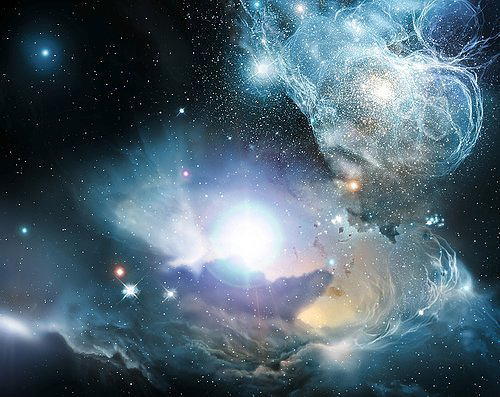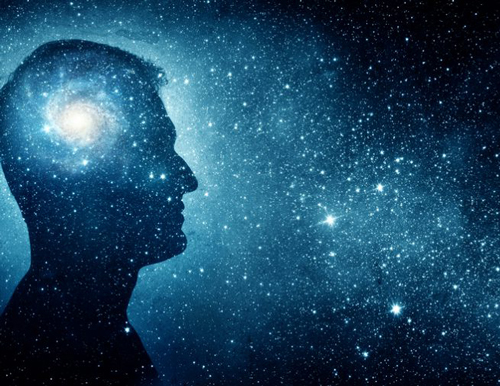Five New Theories on the Nature of Consciousness
The existence of sentient consciousness in the universe is one of the greatest scientific mysteries of all time. The existence of the universe itself, not to mention the development of organic life, is amazing, and scientists still cannot explain why the universe evolved biological mechanisms to subjectively experience itself. The crux of the debate – rekindled in recent years due to new discoveries in quantum mechanics – centers around whether consciousness is a purely physical, materialistic phenomenon that is self-contained, or whether consciousness constitutes a more symbiotic universal force that helps establish the reality of space-time.

For those who stay up late swan diving into cosmic rabbit holes, here are five stunning new theories of consciousness developed by leading physicists and researchers:
1. “Quantum Consciousness,” or ORCH-OR
For a couple of decades, theoretical physicist Roger Penrose and anaesthesiologist and psychologist Stuart Hameroff have passionately advanced a theory of consciousness known as Orchestrated Objective Reduction, or ORCH-OR. The theory posits that consciousness fires from microtubules embedded in the quantum core of our universe, suggesting that consciousness does not arise merely from neurochemical processes of the brain but has a deeper, more primal origin that is intrinsic to the universe.
The theory suggests that our minds can leave behind imprints, residual information, in the fabric of the world around us. Hameroff also believes that this controversial idea of a “quantum consciousness,” that is not dependent on a purely biological substrate, leaves open the possibility of a kind of afterlife.
In January 2014, Japanese researchers detected quantum vibrations in microtubules, providing important corroboration for one of the controversial pillars of ORCH-OR. Consciousness, Penrose and Hameroff argue, is a non-computable force linked to the fundamental geometry of space-time itself.
2. Panpsychism, Universal Proto-Consciousness
Panpsychism is not a new theory, but there have been some interesting tweaks and addendums in recent years. Panpsychism is essentially the belief that the universe itself is conscious, that there is a kind of ubiquitous proto-consciousness that permeates the cosmos. As such, panpsychism has traditionally been seen as a philosophical conundrum that is debated in metaphysical circles.
In recent years, however, a growing number of physicists and astronomers have begun viewing panpsychism as a scientific question – a concept that could actually be experimentally tested.
One such physicist, Gregory Matloff, wrote a paper in which he argued that scientists may be able to validate the idea of universal proto-consciousness by looking for “volitional stars” that chart their own paths in galactic orbits. Matloff believes certain phenomena in observational astrophysics, such as Parenago’s Discontinuity, could help confirm panpsychism. Matloff also believes that a new theory of panpsychism could one day replace dark matter.
Other modern proponents of panpsychism include German physicist Bernard Haisch, who presented a theory that harkens back to ORCH-OR, in that it suggests that consciousness arises in a “quantum vacuum” anytime energy flows through an advanced system or structure. Neuroscientist and psychiatrist Giulio Tononi believes that consciousness may not be limited to biological organisms and that integrated information theory would suggest we make a distinction between consciousness and intelligence in the universe.
3. The Participatory Universe
The “participatory universe” theory is sometimes noted as a subset of panpsychism, but it deserves its own entry. Developed by renowned physicist John Archibald Wheeler – who coined the term “black hole” and worked with Niels Bohr on early groundbreaking experiments in quantum mechanics, among many other achievements – participatory universe, or Participatory Anthropic Principle, incorporates ideas from quantum theory to suggest that human observation creates the universe.

More specifically, Wheeler argued that the universe exists in a state of undefined quantum potential until the conscious observer collapses reality down into a single state. In essence, the universe requires the participation of a consciousness in order to have an objective reality. This theory requires really drilling down into the nuances of quantum theory, but it’s worth going down that rabbit hole.
4. The Global Consciousness Project and Retroactive Precognition
The Global Consciousness Project resulted from a series of experiments that took place at Princeton in the 1990s. The researchers there launched a project called Princeton Engineering Anomalies Research (PEAR) and ultimately wrote a book called The Margins of Reality that summarized their findings. After running a number of experiments involving human participants and random number generators, the PEAR team concluded that human intention has a small but mathematically significant effect on physical reality.
Essentially, the researchers believe that human consciousness can impact random information and make it more ordered. The research turned into the ongoing Global Consciousness Project, which collects worldwide statistical data documenting how human consciousness affects random number patterns.
A more recent experiment provided anecdotal evidence for something called “retroactive precognition.” Dr. Daryl Bem conducted an experiment strongly suggesting that humans are more likely to remember something in the present if they memorize it in the future. In other words, you’re more likely to recall something today if you memorize it tomorrow – which takes a minute to get your head around. His paper “Feeling the Future” presents experimental evidence that the human mind can cognitively sense the future in the present, though the exact mechanism remains unknown.
If these studies seem to suggest the reality of some kind of extrasensory perception (ESP) on the part of humans, it would not be the first time this idea was considered. In 2017, the CIA declassified hundreds of thousands of documents confirming that the government experimented with ESP and worked with psychics through the legendary STARGATE program. The CIA conscripted psychics as covert spies during the Cold War, attempting to marshall their remote viewing powers to exfiltrate information from the Soviet Union – and Soviet intelligence agents did the same to the US. There was a secret psychic Cold War going on that we’re only now learning about.
The documents also confirmed that police departments all across the US regularly hire psychics to solve “cold” cases and that the method works a shocking number of times.
5. Advanced Intelligence May Encode Itself into the Physics of the Universe
This is one of the newest and most shocking theories on the list. It is kind of science fiction – not something most people would expect to find openly written about by respected scientists.
In an article entitled “Is Physical Law an Alien Intelligence?” the esteemed astronomer and astrobiologist Caleb Scharf explored the idea that advanced alien consciousness may actually be encoded into the fabric of the universe itself. Harnessing theories from modern futurists and the enigmas of dark matter and dark energy, Scharf argues that higher forms of intelligence in our universe may encode living systems into physical law itself and use the energy to “manipulate luminous matter.”
The theory puts a new spin on panpsychism and presents an outlandish explanation for both dark matter and dark energy.
In a way, all of these theories can be said to flow together, describing a new conception of consciousness that transcends the bounds of current science. The fact that many of these theories are championed by renowned physicists and scientists testifies to their legitimacy. The fact is, there is much about this universe we don’t know. However, observations from quantum theory tell us there is a nebulous but fundamental link between consciousness and the establishment of physical reality.
yogaesoeric
June 11, 2019
